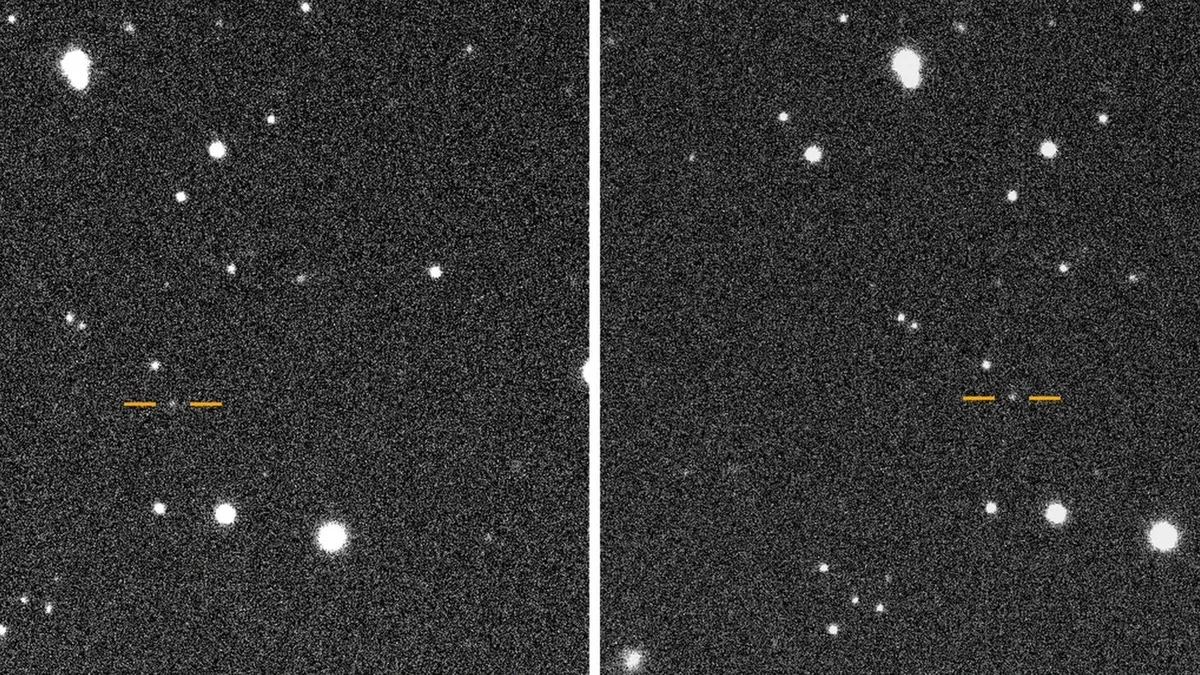
A newly discovered space rock, identified as 2025 SC79, has captivated the attention of astronomers due to its remarkable speed. This asteroid has an orbital path that lies within the orbit of Venus and completes its journey around the Sun in just 128 days. This rapid orbit makes 2025 SC79 the second-fastest unique asteroid in our solar system, as stated by Carnegie Science.
In addition to its speed, 2025 SC79 is also noteworthy for its size. Measuring approximately 0.4 miles (700 meters) in length, it is comparable to a large skyscraper. The asteroid was discovered by Carnegie astronomer Scott Sheppard on September 27, 2023, while it was cleverly hidden within the glare of the Sun. Sheppard, known for his expertise in discovering small moons orbiting Jupiter, Saturn, Uranus, and Neptune, emphasized the importance of locating hidden asteroids like 2025 SC79 for planetary protection.
While 2025 SC79 poses no immediate threat to Earth, its discovery underscores the critical need to identify hidden asteroids. Sheppard noted that the most dangerous asteroids are often the most challenging to detect. Typically, asteroid observations are conducted in the dark of night when they are easier to spot. However, asteroids that reside near the Sun can only be observed during twilight, just before sunrise or after sunset. These 'twilight' asteroids could become serious impact hazards if they approach Earth.
Scott Sheppard's research team previously discovered the fastest-known asteroid, 2021 PH27, which orbits the Sun in just 113 days, making it less than a third of a year on Earth. The study of twilight asteroids is supported financially by NASA and utilizes the Dark Energy Camera at the National Science Foundation's (NSF) Víctor M. Blanco 4-meter telescope in Chile. The recent confirmation of 2025 SC79 was facilitated by NSF's Gemini Observatory, which has locations in both Hawaii and Chile, in addition to Carnegie Science's twin Magellan Telescopes in Chile.
The astronomy community was informed of the discovery of 2025 SC79 on October 15, 2023, through a circular from the Minor Planet Center, a division of the International Astronomical Union that disseminates information about small natural celestial bodies. Follow-up observations of 2025 SC79 will be delayed for several months as it is currently behind the Sun from Earth's viewpoint. Future studies will provide insights into its composition, resilience to the Sun's intense heat, and its potential origin.
Sheppard highlighted that studying these asteroids holds significant merit, as it aids astronomers in understanding how gravitational interactions with other celestial bodies can alter the orbits of small bodies over time. Gaining insights into how asteroids like 2025 SC79 arrived at their current locations is crucial for planetary defense and enhances our understanding of the history of our solar system.
Astronomers maintain vigilant oversight of asteroids in the sky, particularly those classified as potentially hazardous asteroids that pose a higher statistical risk. Despite extensive searches over the years, no immediate threats to Earth have been identified. The ongoing discovery and monitoring of asteroids like 2025 SC79 are essential for ensuring the safety of our planet and expanding our knowledge of the universe.